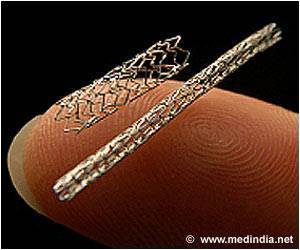The newborn animal heart can heal itself completely, but the adult heart lacks this ability, according to previous research.

Yes, oxygen. It is well-known that a major function of the heart is to circulate oxygen-rich blood throughout the body. But at the same time, oxygen is a highly reactive, nonmetallic element and oxidizing agent that readily forms toxic substances with many other compounds. This latter property has now been found to underlie the loss of regenerative capacity in the adult heart.
This groundbreaking new finding, published in today's issue of Cell, finds that the oxygen-rich postnatal environment results in cell cycle arrest of cardiomyocytes, or heart cells.
"Knowing the key mechanism that turns the heart's regenerative capacity off in newborns tells us how we might discover methods to reawaken that capacity in the adult mammalian heart," said Dr. Hesham Sadek, Assistant Professor of Internal Medicine at UT Southwestern and senior author of the study.
Due to the oxygen-rich atmosphere experienced immediately after birth, heart cells build up mitochondria – the powerhouse of the cell – which results in increased oxidization. The mass production of oxygen radicals by mitochondria damages DNA and, ultimately, causes cell cycle arrest.
"We have uncovered a previously unrecognized protective mechanism that mediates cardiomyocyte cell cycle arrest and that arises as a consequence of oxygen-dependent aerobic metabolism," said Dr. Sadek.
Heart muscle contains the highest amount of mitochondria in the body and consumes 30 percent of the body's total oxygen in a resting state alone. Unfortunately, the energy that comes from massive oxygen consumption comes with a price in the form of oxidation of DNA that makes the heart cells unable to divide and regenerate.
This study comes on the heels of findings published in the Feb. 25, 2011, edition of Science, in which Dr. Sadek found that if a portion of a mouse heart was removed during the first week after birth, that portion grew back wholly and correctly. In contrast, an adult heart was irreversibly damaged by removal of even a small amount of tissue.
Because the adult mammal's heart is not able to regenerate following injury, this represents a major barrier in cardiovascular medicine. Having a promising new understanding of what arrests cardiomyocyte cell cycle could be an important component of cardiomyocyte proliferation-based therapeutic approaches.
Source-Eurekalert
 MEDINDIA
MEDINDIA



 Email
Email





